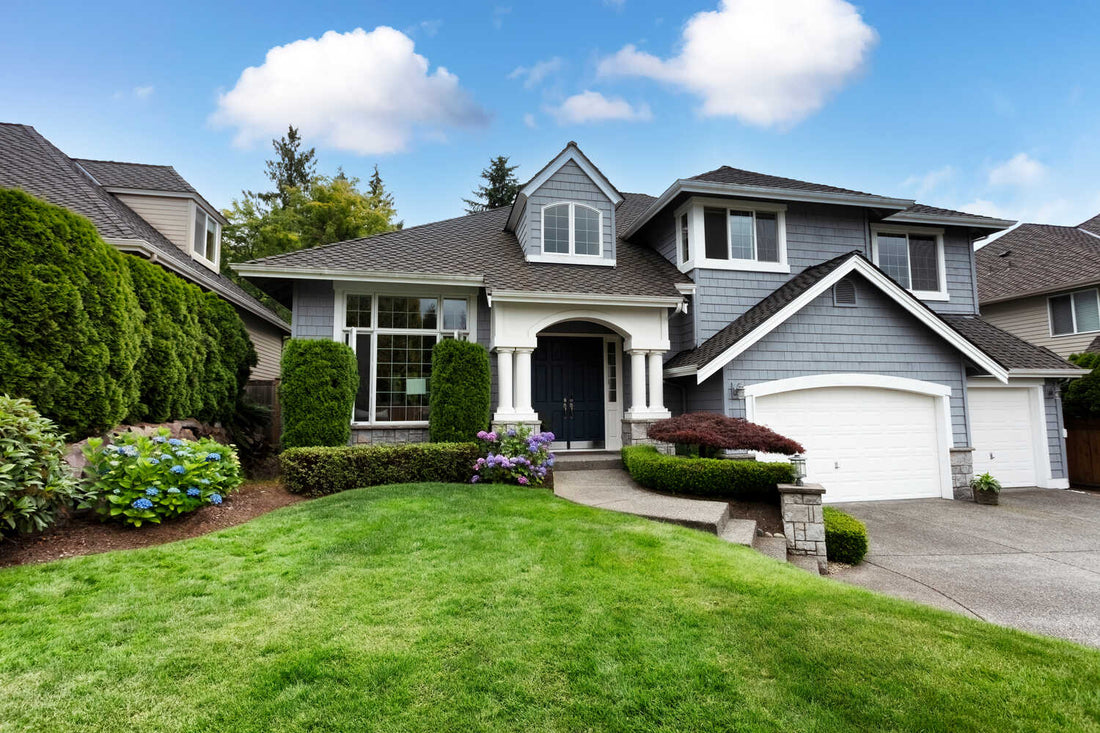If you're asking when to apply pre emergent in Georgia, you're already ahead of the game. Timing pre-emergent applications isn't guesswork—it's strategy.
At Lawn Synergy, we equip homeowners with professional-grade, nutrient-rich products that outperform anything on the big box store shelf. But product quality is only half the battle.
Timing is everything. That's why we provide the tools, knowledge, and support to help you apply pre-emergent at the right moment for Georgia's unique climate.
This is the synergy between expert-grade lawn care and DIY passion. Let's stop weeds before they start.
What this article covers:
- Why Timing Is Key for Pre-Emergent in Georgia Lawns
- When to Apply Pre-Emergent in Spring
- Fall Application Timing for Winter Weed Prevention
- Pre-Emergent Timing by Grass Type
- How to Know Your Lawn Is Ready for Application
- Common Pre-Emergent Mistakes in Georgia
- Tips for a Successful Application
- Should You Apply Fertilizer at the Same Time?
Why Timing Is Key for Pre-Emergent in Georgia Lawns
The success of a pre emergent herbicide depends entirely on when it's applied. This isn't a spray-and-pray situation. Pre-emergents create a barrier in the soil that prevents weed seeds from sprouting.
But if you wait until weeds are visible, the window is already closed. Applying too early? The product can break down before it's even needed.
In Georgia, where soil temperatures fluctuate rapidly in spring and fall, getting that timing right is what separates an okay lawn from a perfect one.
How Georgia's Climate Affects Weed Growth
Georgia's climate is a mix of humid subtropical warmth and long growing seasons, which means weeds have plenty of time to thrive if you're not careful.
Warm-season weeds like crabgrass love spring, while winter weeds like poa annua show up in fall.
Because Georgia rarely experiences hard ground freezes, weed seeds can germinate earlier than you think—and stick around longer than expected.
What Happens If You Miss the Ideal Window
If you apply too late, pre-emergent won't stop already-germinated weeds. You'll be left scrambling for post-emergent solutions that don't always work as cleanly.
Worse, some homeowners try layering applications too close together to compensate, which can stress the lawn or damage roots.
At Lawn Synergy, we coach homeowners through the ideal window to avoid these common pitfalls.

When to Apply Pre-Emergent in Spring
Spring pre-emergent timing in Georgia is all about tracking soil temperatures. Don't rely on your calendar—rely on your tools and region-specific knowledge.
Soil Temperature vs. Calendar Date
Crabgrass germinates when soil temperatures reach a steady 55°F. That can happen as early as late February in southern Georgia and by mid-March in northern areas.
Apply your spring pre-emergent about 7–10 days before that threshold. If you're in Atlanta, that means early to mid-March.
In Savannah, it could be late February. Track your soil temps daily for accuracy.
Targeting Crabgrass and Summer Annual Weeds
Crabgrass, goosegrass, spurge, and other warm-season invaders all start to germinate once soil warms up.
A well-timed pre-emergent blocks their growth right at the root level. No germination means no future weeds.
But wait too long, and these fast-spreading weeds will dominate. That's why Lawn Synergy offers step-by-step scheduling support to help customers hit their mark every season.
Fall Application Timing for Winter Weed Prevention
Fall pre-emergent is just as critical as spring—especially if you've battled poa annua or chickweed in the past.
Controlling Weeds Like Poa Annua and Chickweed
These winter annuals germinate when soil temps drop below 70°F. That typically happens in Georgia around mid-September to early October, depending on your location.
Get your fall pre-emergent down just before this shift to stop winter weeds from taking over your dormant turf.
Recommended Timing for Different Georgia Zones
- Southern GA (Savannah, Valdosta): Fall pre-emergent around early to mid-September
- Central GA (Macon, Augusta): Mid to late September
- Northern GA (Atlanta, Athens): Late September to early October
Timing can vary by year, so track soil temps rather than the calendar alone.
Pre-Emergent Timing by Grass Type
The type of grass in your lawn also affects pre-emergent timing. Different turf varieties have different active growth periods—and different sensitivities.
Bermuda, Zoysia, Centipede, and Tall Fescue Lawns
- Bermuda & Zoysia: Apply spring and fall pre-emergent to target both warm-season and winter weeds. These lawns benefit from seasonal weed control that doesn't interfere with dormancy.
- Centipede: Requires careful timing. Use a lighter touch in fall and avoid overlapping spring apps.
- Tall Fescue: Often overseeded in fall. Avoid fall pre-emergent if you plan to seed. Stick with a spring-only application unless you're skipping overseeding.

Matching Your Schedule to Turf Behavior
Bermuda and Zoysia green up in late spring, so early-season weed control is critical. Fescue stays active longer, especially in fall, so late-season poa annua prevention becomes more important.
Understanding your lawn's behavior helps time your pre-emergent without disrupting healthy growth.
How to Know Your Lawn Is Ready for Application
Being precise isn't hard—it just takes the right tools and a few cues from nature.
Using Soil Thermometers and Online Tools
Use a soil thermometer to check the temperature 2–3 inches below the surface.
You can also check online tools like GreenCast or your local extension service's lawn care portal. Don't skip this step—it's more reliable than guessing by date or air temp.
Signs of Early Germination to Watch For
If you see tiny weeds sprouting, the window for pre-emergent has already closed.
Other signs include rapidly warming days, longer daylight hours, and soil that stays warm overnight. These all indicate it's go-time.
Common Pre-Emergent Mistakes in Georgia
Avoid these common errors that can turn your plan into a problem.
Applying Too Late After Germination Has Started
Pre-emergents prevent growth—they don't kill existing weeds. Once germination starts, you'll need a post-emergent herbicide. That's a reactive move. We're here to help you stay proactive.
Overapplying or Layering with Post-Emergents Too Soon
Applying more than the recommended dose doesn't offer more protection. It can lead to lawn stress and thinning.
And mixing pre- and post-emergents too close together may cancel out their effectiveness. Always follow label instructions—and reach out to Lawn Synergy for tailored advice.

Tips for a Successful Application
Nailing the timing is just part of the plan. Execution matters, too.
Watering In and Avoiding Runoff
Pre-emergents need water to activate. Apply about ½ inch of irrigation or rely on rainfall within 3 days.
Don't overdo it—runoff wastes product and pollutes nearby waterways. Plan applications around your irrigation schedule or check the forecast for the perfect rainfall window.
Equipment and Product Choice for Georgia Conditions
Use a calibrated spreader to ensure even coverage. Hand-crank or walk-behind types both work—just make sure you're not missing patches or doubling up.
At Lawn Synergy, we provide easy-to-apply granules packed with pro-grade nutrients, not fillers, so your lawn gets what it needs with every application.
Should You Apply Fertilizer at the Same Time?
Short answer: not always. Some pre-emergent products contain light fertilizers, but in most cases, fertilizer should be applied separately to avoid nutrient overload.
Spring fertilizing should be timed with your lawn's green-up, not just your pre-emergent schedule.
For example, understanding when to apply pre emergent in NC or when to apply pre emergent in South Carolina helps ensure you don't fertilize too early, which can waste nutrients or encourage weak growth.
Lawn Synergy's fertilizer subscription program makes this easy. You'll get the right products at the right time with instructions tailored to your region and turf.
Conclusion
So, when to apply pre emergent in Georgia? The key is soil temperature, not the date on the calendar. For spring, apply just before soil hits 55°F.
For fall, aim for just before it dips below 70°F. Adjust for your region, grass type, and lawn care goals. And most importantly, don't go it alone.
At Lawn Synergy, we give homeowners everything they need to achieve pro-level results—from premium products to real support. Want a weed-free lawn that looks like an estate property? Let's build it together.
If you want to learn more, check out these articles below
-
When to Apply Pre Emergent in Florida
- When to Apply Pre Emergent in Tennessee
- Best Pre Emergent
- Best Pre Emergent for Lawns
- Best Pre Emergent for Bermuda
- Best Pre Emergent for St Augustine
- Best Pre Emergent for Centipede Grass
- When to Apply Pre Emergent
- When to Apply Pre Emergent in Texas
- When to Apply Pre Emergent in Fall
- When to Put Down Pre Emergent in Spring
- When to Apply Crabgrass Pre Emergent
- How Long Does Pre Emergent Last?
- Is It Too Late for Pre Emergent?
- Does Pre Emergent Work?

